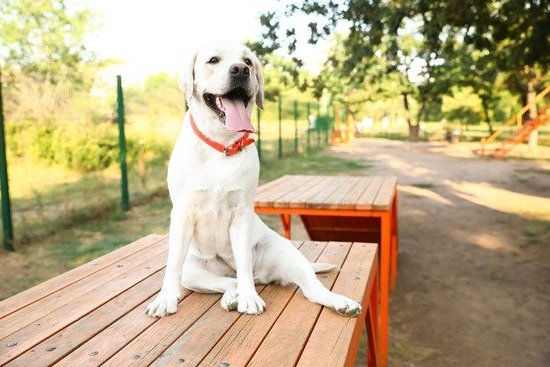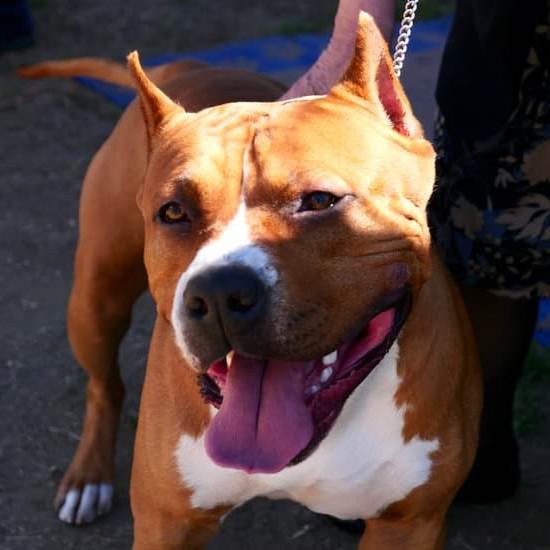Are you wondering how to train your dog to go down stairs? Many dogs struggle with this task, whether due to fear, anxiety, or simply lack of experience. In this article, we will discuss the importance of training your furry friend to navigate stairs safely and confidently. From understanding your dog’s fears and anxieties to step-by-step training techniques and positive reinforcement, we’ll cover everything you need to know to help your dog conquer the stairs.
Many dogs experience fear or anxiety when faced with the challenge of going down stairs. This can lead to hesitation, resistance, or even injury if not addressed properly. By understanding your dog’s emotions and behaviors, you can better prepare them for success in navigating stairs. Creating a safe and supportive environment is crucial for their confidence and well-being.
In the following sections, we will discuss preparation tips, step-by-step training techniques, positive reinforcement strategies, troubleshooting common challenges, gradual progression methods, as well as the importance of consistency and patience in successful training. Your dedication to helping your dog overcome their fears will result in a happy and confident companion who can navigate any staircase with ease.
Understanding Your Dog’s Fear and Anxiety
It is essential to understand that a dog’s fear of going down stairs may stem from various reasons. It could be due to a previous negative experience, lack of exposure during their critical socialization period, or simply a result of their natural instincts. Dogs may perceive the sight of steep stairs as a potential threat or danger, leading to feelings of fear and anxiety.
In order to address your dog’s fear and anxiety towards stairs, it is crucial to observe their body language and behavior when faced with the stairs. Common signs of fear and anxiety in dogs include trembling, panting, pacing, whining, or attempting to flee from the situation. By recognizing these signs, you can better understand the extent of your dog’s discomfort and tailor your training approach accordingly.
Additionally, it is important to approach your dog with patience and empathy. Rushing or forcing them to go down stairs will only heighten their fear and make the training process more difficult.
Instead, take the time to reassure your dog, build their confidence gradually, and provide them with the support they need to overcome their fear of stairs. By understanding and addressing your dog’s fear and anxiety surrounding stairs, you can create a supportive environment that sets the stage for successful training.
Preparation
Creating a safe and supportive environment is crucial when training your dog to go down stairs. It’s important to set the stage for success by making sure the environment is free of potential hazards and distractions. Here are some key steps to take in order to prepare your home for effective stair training.
Clearing the Area
Before you begin training your dog, take the time to clear the area around the stairs. Remove any objects that could obstruct your dog’s path or pose a tripping hazard. This includes items such as shoes, toys, or any other clutter that could potentially cause your dog to stumble as they navigate the staircase.
Secure Handrails and Treads
Ensure that handrails are secure and stable, providing your dog with something to grip onto as they descend the stairs. Additionally, check that each step is in good condition with no loose treads or slippery surfaces. Providing a stable and safe surface will help build your dog’s confidence as they learn to navigate the stairs.
Comfortable Landing Areas
Place non-slip mats or rugs at both the top and bottom of the staircase to provide comfortable landing areas for your dog as they go up and down. These mats can help alleviate any fears or anxieties by providing a secure foothold, giving your pet more confidence while practicing their stair descent.
By taking these steps to create a safe and supportive environment, you will be setting up your dog for success as you begin their stair training journey. A well-prepared environment will help alleviate their fears and anxieties, making it easier for them to learn this new skill.
Step-by-Step Training Techniques
Teaching your dog to go down stairs can be a daunting task, especially if your furry friend is fearful or anxious about it. However, with the right training techniques and plenty of patience, you can help your dog conquer their fear and confidently navigate staircases. Below are some step-by-step training techniques to help you teach your dog to go down stairs:
1. Desensitization: Start by introducing your dog to the stairs in a calm and controlled manner. Allow them to sniff and explore the staircase at their own pace without any pressure.
2. Positive Association: Use treats, toys, or verbal praise to create a positive association with the stairs. For example, place treats on each step to encourage your dog to approach and eventually descend the staircase.
3. Leash Guidance: If your dog is hesitant, use a leash for guidance. Stand at the bottom of the stairs and gently guide your dog down while offering verbal encouragement and treats as a reward for their progress.
Remember that every dog has its own pace when it comes to learning new skills, so be patient and consistent with your training efforts. Celebrate small victories and progress, and avoid forcing or overwhelming your dog during the training process. With time and persistence, you’ll be able to celebrate your dog’s achievement of confidently going down stairs.
Positive Reinforcement and Rewards
Training your dog to go down stairs can be a challenging process, especially if your furry friend is experiencing fear or anxiety. Utilizing positive reinforcement and rewards can be a great way to encourage your dog to conquer the stairs with confidence. By implementing these training techniques, you can help your dog overcome their apprehension and develop a sense of accomplishment.
Understanding the Power of Positive Reinforcement
Positive reinforcement involves rewarding your dog for exhibiting the desired behavior, in this case, going down the stairs. This can include treats, praise, or playtime as a form of motivation for your dog. When your dog successfully navigates the stairs, immediately provide them with a reward to reinforce the positive behavior. Over time, they will associate descending the stairs with positive outcomes, making it more likely for them to repeat the action.
Choosing the Right Rewards
When selecting rewards for your dog during stair training, consider using high-value treats that your dog absolutely loves. These can be small pieces of cooked chicken, cheese, or commercially available dog treats that are particularly enticing. Additionally, verbal praise and petting can also serve as effective rewards for many dogs. Experiment with different types of rewards to determine what motivates and excites your dog the most.
Consistency in Rewarding Progress
Consistency is key when using positive reinforcement during stair training. Every time your dog successfully goes down a step or completes a flight of stairs, provide them with a reward and plenty of praise. Consistently rewarding their progress will reinforce their confidence and make them more willing to continue practicing going down the stairs. Remember that patience and repetition are essential components of successful training with positive reinforcement.
Troubleshooting
One of the common challenges when training your dog to go down stairs is their difficulty in taking that first step. This can be due to fear, anxiety, or simply not understanding how to navigate the stairs. It’s important to understand that this is a common issue and can be addressed with patience and consistent training.
To address this challenge, start by creating a positive association with the stairs. Use treats or toys to encourage your dog to approach the stairs, and reward them for any small steps they take towards it. Gradually introduce the concept of going down the stairs by using a leash or harness for support. This will help them feel more secure as they navigate the steps.
Another common challenge is when dogs try to jump or skip steps while going down the stairs. This can be dangerous and may result in injury if not addressed. Use positive reinforcement techniques such as using treats and praise for each step taken correctly. Additionally, consider using physical barriers such as baby gates or stair blockers to prevent your dog from skipping steps until they are more confident in navigating the stairs.
Table Below Shows Some Useful Data
| Common Challenges | Addressing Techniques |
|---|---|
| Dog’s fear and anxiety | Create positive association, use leash/harness for support |
| Jumping or skipping steps | Positive reinforcement, physical barriers (e.g. baby gates) |
Gradual Progression
As your dog becomes more confident in going down stairs, you can gradually increase the difficulty to further improve their skills. One way to do this is by finding different sets of stairs with varying heights and angles. This will help your dog become comfortable with navigating different types of staircases, such as steep or narrow steps. It’s important to start small and work your way up to larger or steeper stairs to prevent overwhelming your dog.
Another method of increasing difficulty is by introducing distractions while training your dog to go down stairs. This could involve having another person or pet at the bottom of the stairs as a positive motivator for your dog. Additionally, you can try incorporating toys or treats at each step to encourage them to continue moving forward. The goal is to teach your dog how to focus and remain calm even when faced with potential distractions on the stairs.
It’s essential to monitor your dog’s progress closely during each training session and adjust the difficulty level accordingly. If you notice signs of anxiety or fear, it’s crucial to take a step back and revisit previous steps before progressing further. By gradually increasing the difficulty in a controlled and positive manner, you can help build your dog’s confidence and mastery of navigating stairs in various environments.
| Training Method | Description |
|---|---|
| Varying Stair Types | Introduce different sets of stairs with varying heights and angles. |
| Introducing Distractions | Incorporate positive motivators or toys as distractions during training sessions. |
| Monitoring Progress | Closely observe your dog’s response and adjust difficulty accordingly. |
Consistency and Patience
When it comes to training your dog to go down stairs, consistency and patience are key factors in achieving success. Here are some tips to help you stay consistent and patient throughout the training process:
1. Set a schedule: Establish a regular training schedule for your dog to practice going down the stairs. Consistency in timing will help your dog become familiar with the routine and build confidence.
2. Use the same commands: It’s important to use the same verbal cues and hand signals each time you train your dog to go down stairs. This consistency will help your dog understand what is expected of them.
3. Stay calm and positive: Dogs are very sensitive to their owner’s emotions, so remaining calm and positive during training sessions is crucial. If you become frustrated or anxious, your dog may pick up on these feelings and become more fearful of going down stairs.
4. Be patient: Every dog learns at their own pace, so it’s important to be patient throughout the training process. Some dogs may take longer to feel comfortable going down stairs, but with consistent practice and positive reinforcement, they will eventually conquer their fear.
By following these tips for successful training, you can help your dog overcome their fear of going down stairs and build a trusting relationship with them as their owner/trainer. Remember that every dog is unique, so it’s essential to be patient and consistent as you work with your furry friend.
Conclusion
In conclusion, training your dog to go down stairs is an important skill that can improve their confidence and make daily activities much easier. It’s crucial to understand and address any fear or anxiety your dog may have about going down stairs, and to create a safe and supportive environment for them to learn in. By using positive reinforcement, rewards, and gradual progression, you can successfully teach your dog to conquer the stairs.
As you celebrate your dog’s achievement in mastering the stairs, it’s important to remember that training is an ongoing process. Continued practice and consistency will help solidify their new skill and ensure that they remain comfortable with going down stairs.
Additionally, be patient with any setbacks or challenges that may arise along the way, as each dog learns at their own pace. With dedication and perseverance, you can help your furry friend overcome their fear of stairs and become more confident in navigating their surroundings.
Remember that every dog is unique, so it’s essential to tailor your training techniques to suit your dog’s specific needs and personality. Keeping these tips in mind as you work with your dog will not only help them become more comfortable with stairs but also strengthen the bond between you both. Ultimately, with time and patience, you can help your beloved pet become a pro at going up and down stairs without fear or hesitation.
Frequently Asked Questions
Why Won’t My Dog Go Down the Stairs?
Some dogs may be hesitant or unwilling to go down the stairs due to fear, lack of confidence, or a previous negative experience. It’s important to observe your dog’s behavior and body language to determine the underlying reason for their reluctance. Patience, positive reinforcement, and gradual exposure can help your dog feel more comfortable with navigating the stairs.
What Age Do Dogs Learn to Go Down Stairs?
The age at which a dog learns to go down stairs can vary depending on factors such as breed, size, and individual personality. Most puppies begin learning to navigate stairs at around 3-4 months old, but it ultimately depends on the dog’s development and level of confidence.
It’s essential to supervise and support your puppy as they learn this skill to prevent any accidents or injuries.
How Do I Stop My Dog From Going Upstairs?
If you want to stop your dog from going upstairs, consistent training and clear boundaries will be important. Using baby gates or other physical barriers can restrict access to certain areas of the house while teaching your dog that upstairs is off-limits.
Additionally, positive reinforcement and redirecting your dog’s attention to something else when they try to go upstairs can also help modify their behavior over time. Remember that patience and consistency are key in this process.

Welcome to the blog! I am a professional dog trainer and have been working with dogs for many years. In this blog, I will be discussing various topics related to dog training, including tips, tricks, and advice. I hope you find this information helpful and informative. Thanks for reading!





